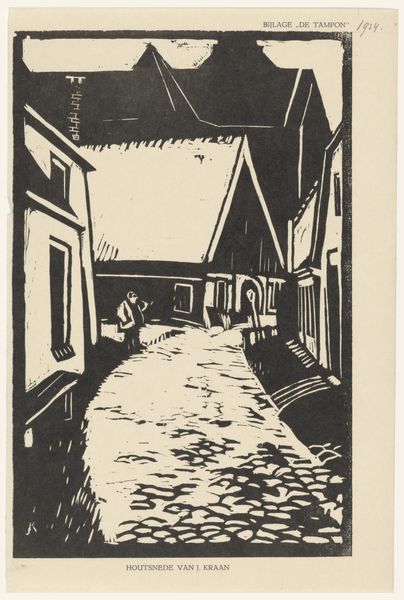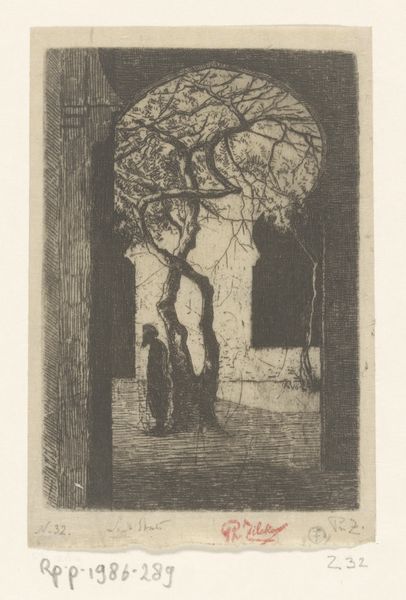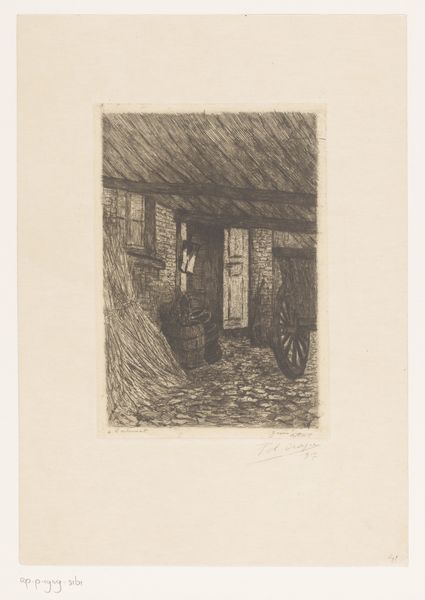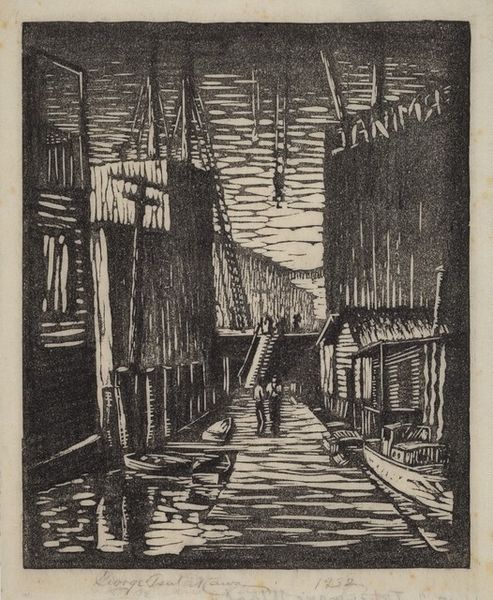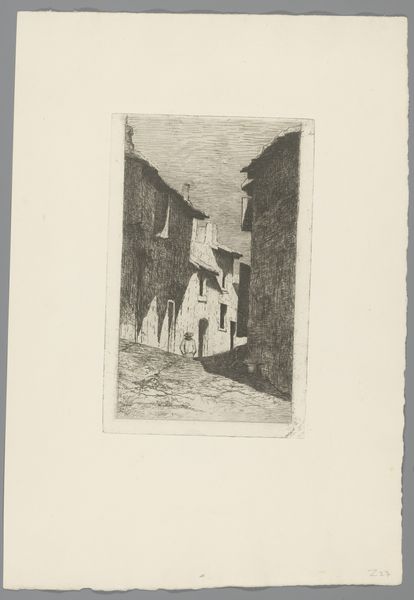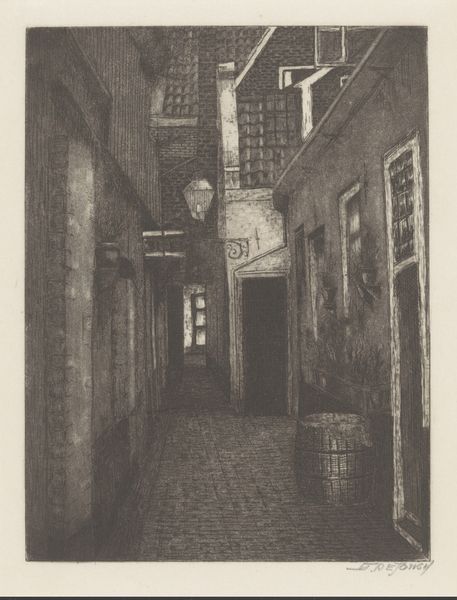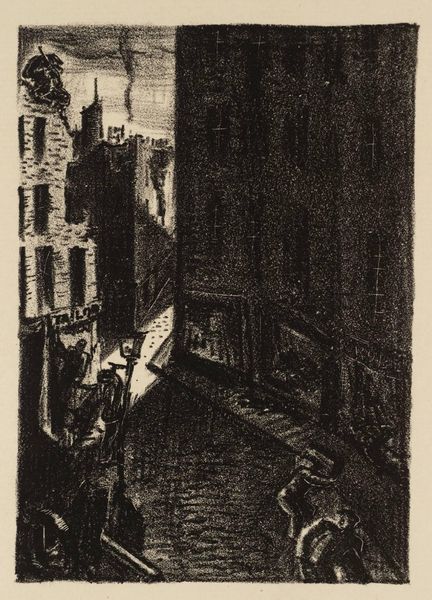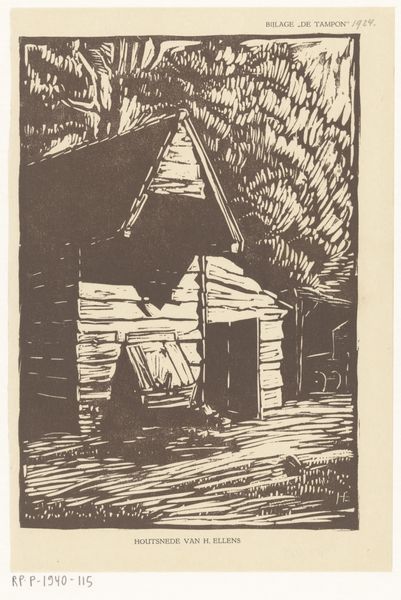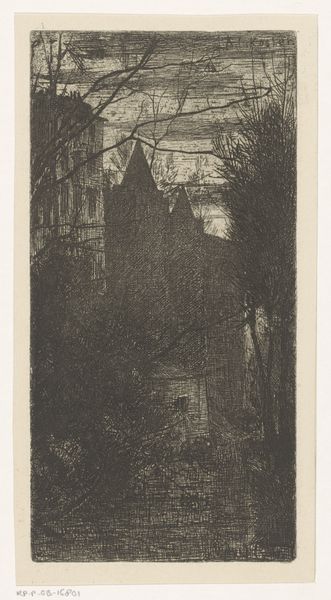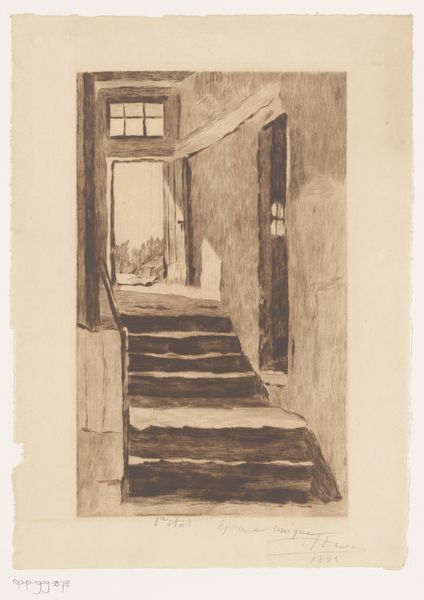
print, woodcut
#
ink drawing
# print
#
landscape
#
geometric
#
woodcut
#
line
#
cityscape
Dimensions: height 253 mm, width 170 mm
Copyright: Rijks Museum: Open Domain
Curator: Let's discuss S. de Jongh’s “Steeg met poort,” created in 1924. This striking woodcut, reminiscent of old Dutch cityscapes, captures an intimate alleyway view. What are your first impressions? Editor: It’s evocative. I’m immediately drawn to the stark contrasts, the dramatic light and shadow. There’s an undeniable sense of claustrophobia but also curiosity. I want to walk down that alleyway and see what's at the end. Curator: The woodcut technique itself emphasizes those feelings. The deliberate cuts carve out harsh angles that amplify the sense of enclosure. De Jongh lived and worked during a period of rapid urbanization. Do you think this imagery comments on the increasing density and the human experience within urban spaces? Editor: Absolutely. Beyond mere documentation, the print delves into the experience of navigating a shifting landscape. The shadow and the height of the surrounding brick hint at being enclosed; an environment where one's movement could be surveilled or even oppressed. Consider the politics of space, who owns it, who is allowed access, and what societal dynamics are at play. Curator: Fascinating point. Woodcuts and prints had become politically charged in the early twentieth century. Could De Jongh be channeling some of that spirit here? Consider that printmaking offered avenues for dissent. This image is so textural. Editor: Yes, it feels charged, especially when viewed through the lens of power dynamics and socio-political factors affecting city life in the early 20th century. It's less a romantic cityscape and more a statement about urban confinement, I believe. It raises complex questions about urban existence and its implications for our mental and societal well-being. Curator: An incisive interpretation. "Steeg met poort" offers us, beyond its aesthetic merit, an early record of these changing perceptions that have marked the past 100 years of modern society. Editor: This analysis certainly enriches my view of De Jongh's woodcut, deepening its emotional weight, its link to power structures. It encourages viewers to look at art as a product of its context and a dialogue on sociopolitical concerns.
Comments
No comments
Be the first to comment and join the conversation on the ultimate creative platform.
